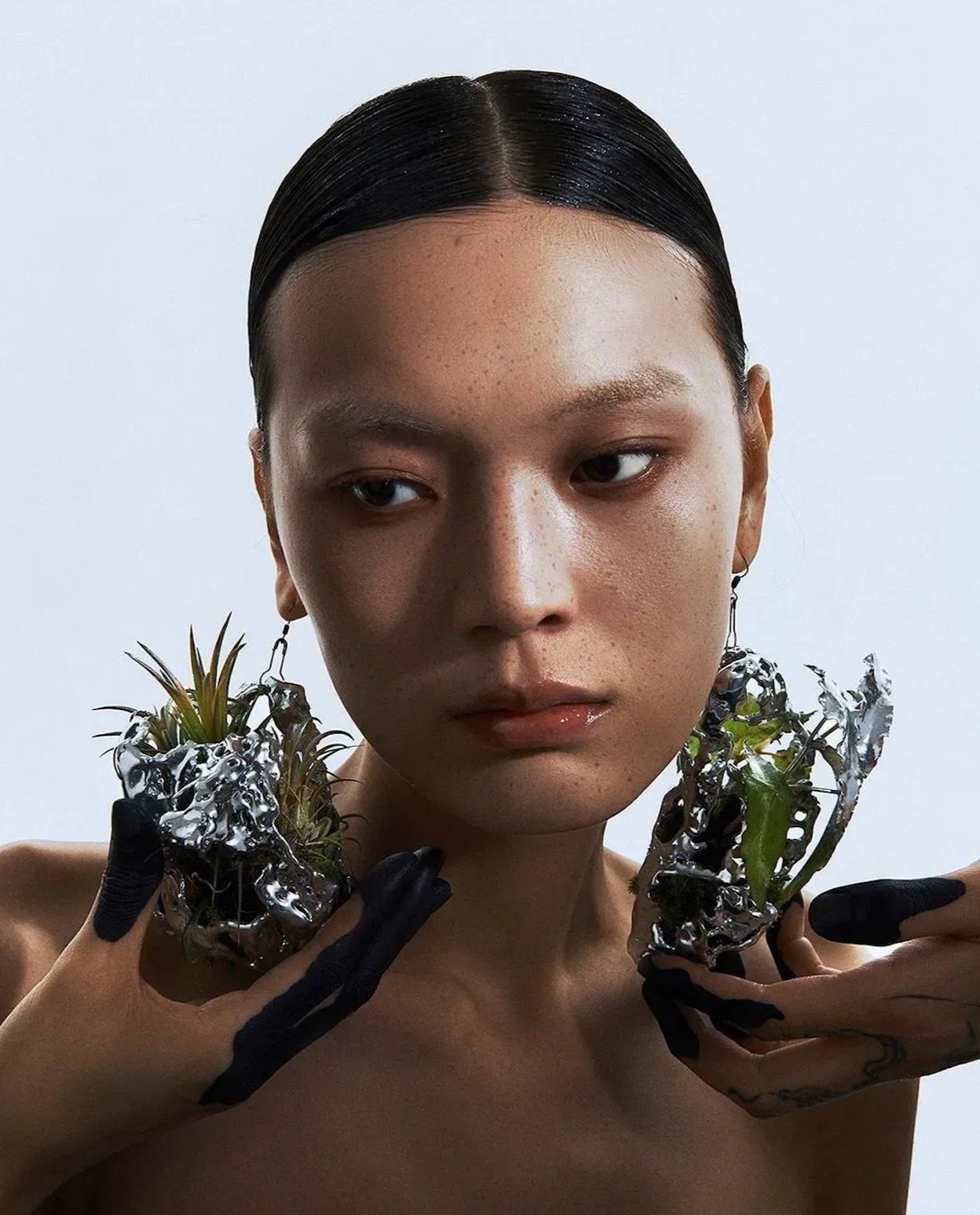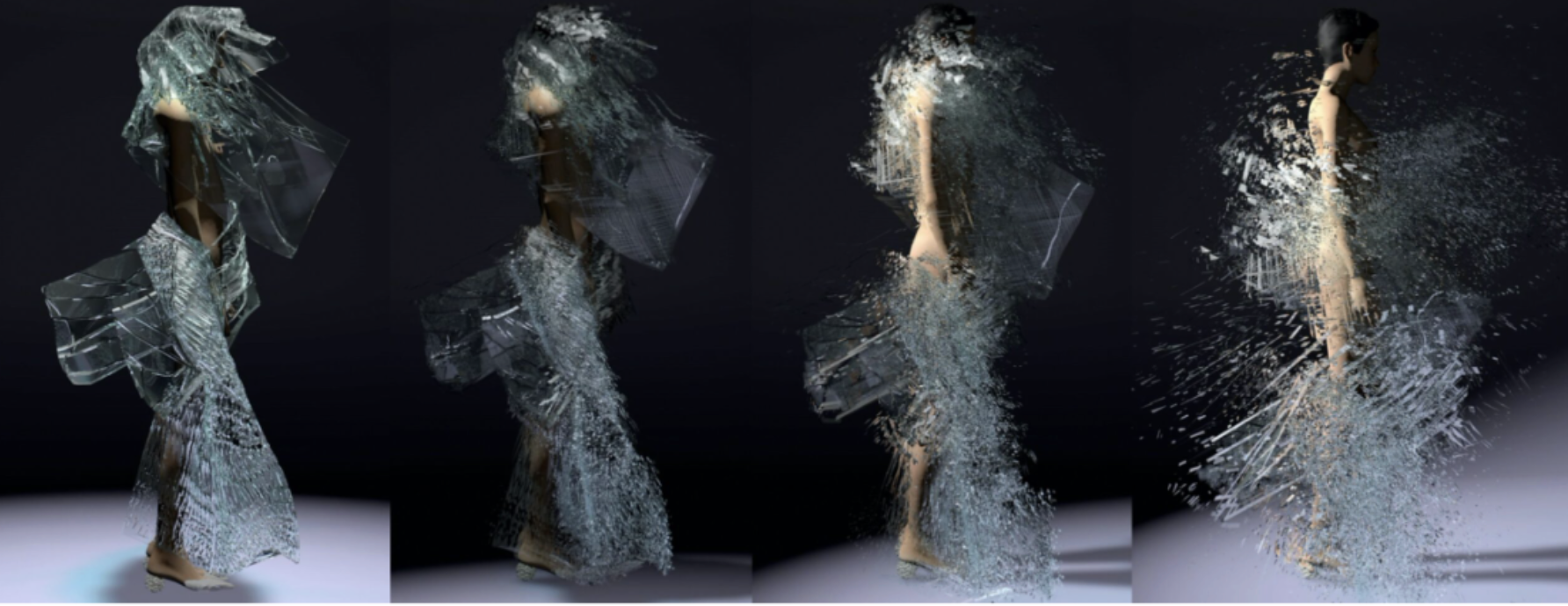Coexistence
This was originally published in EnMode, here.
10th October, 2022
Speculative ecosystems: where fashion, technology, and biology intersect.
Weiran’s SS23 “Speculative Ecosystem.”
In the fashion world, many creatives are hypothesizing the next stages of human evolution with digital media. This area of design is often labeled as speculative ecosystems and is considered to be a form of hard science fiction since it is derived from scientific reasoning and research.
Through merging art, technology, and biology, fashion designers Weiran and Scarlett Yang are able to translate abstract and complex ideas into physical couture, which represents their projections about future ecosystems.
Weiran, a fashion designer based in New York, born in Beijing, creates hi-tech couture using 3D modeling, digital manipulation, and textile experimentation. Weiran’s designs represent the conflict between nature and manmade items and simultaneously offer a view of a world where the organic and the mechanical can coexist with each other harmoniously.
Her SS23 “Speculative Ecosystem” collection contains 10 dazzling metallic, futuristic looks, which blend synthetic materials with natural materials such as plants and seashells to reflect how they can have a mutually beneficial relationship. The metallic motif in her designs is reminiscent of the Space Age era, which is hardly surprising because the space era — like Weiran’s design — is based around imagining future realities in unknown spaces.
Weiran’s SS23 “Speculative Ecosystem.”
Weiran said to The Fashion Globe, “Many people think the organic and the artificial are in conflict, but in fact, few people realize mechanical stuff is finding its balanced way to live with organisms. Inspired by this revelation, I blended synthetic materials with seashells and other natural products to create wearable but imaginative pieces for my audience.”
Weiran’s SS23 “Speculative Ecosystem.”
The inspiration for “Speculative Ecosystem” came to Weiran while taking care of her terracotta plants at home. As her plants grew, the roots filled the shape of the pot, giving her the epiphany that natural and manmade products can live together without conflict.
Following this discovery, Weiran recreated the shape of her plant roots using 3D modeling techniques in the form of physical co-grown air plant vases. It is breathtaking that Weiran was able to preserve an exact moment of her plant life because it defies the order of the natural world, where a plant’s life is transient and constantly shifting.
Weiran’s “Co-Grown Air Plant Vases.”
Scarlett Yang, a Central Saint Martins graduate, born in Hong Kong, is another designer challenging how the relationship between nature and technology is perceived. Rather than see technology as a destructive force, Yang highlights how utilizing digital mediums can make the fashion industry more sustainable.
Yang’s “Decomposition of Materiality and Identities” project was a breakthrough moment in fashion history, because she was able to create garments that decompose in controlled conditions, providing a sustainable model for the fashion industry from the root cause of textile waste: materials.
Yang’s design process was a three-step model: digital, material, to immaterial. She began by using 3D computer models to create the shape and textures of her material which limits clothing waste in the experiment stage. Then she created a glass-like dress made from algae extract and cocoon protein, that can grow over time and decompose in 24 hours in water.
Scarlett Yang’s “Decomposition of Materiality and Identities.”
The “Decomposition of Materiality and Identities” collection was also a metaphor for Yang's personal identity. Like the biomaterial, Yang believes that her identity is constantly evolving, highlighting how the physical and digital worlds are not mutually exclusive and that they can exist on a spectrum together.
After making the physical dress, Yang used 3D modeling and animation to show how the dress could be used in different conditions, and people could watch the show online or with virtual headsets. This final project was called “Circular Living System.” For Yang the physical world is ephemeral and constantly shifting. In comparison to the digital world which is permanent and durable.
Scarlett Yang “Circular Living System.”
Yang states how, “My garments display the beauty of natural life forms, aiming to challenge audiences' perception of the concept of material life cycles.”
Fashion relies on the creative force of imagination, where individuals are able to envision a world beyond their lived human experience. Technology is often seen as the antithesis to the natural world, and through the simplistic binary lens of ‘good’ and ‘evil’ roles are assigned: the environment is seen as pure and beautiful, while technology is deemed destructive and harmful. This widespread perspective omits moments where art, nature, and technology collaborate in harmony with one another.
We are entering a new stage of fashion history, with the rise of digital spaces transforming how couture is created and presented. It is exciting to see how designers Weiran and Scarlett Yang are able to utilize digital media to speculate about the future of human evolution and the future of our planet's ecosystem. Rather than fighting technology, these designers are showcasing how the natural world and digital world can co-exist in harmony and perhaps, aid sustainability within the overall industry.
Words by: Amber Weir





